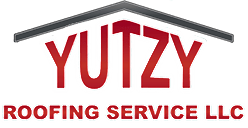As the snow starts to melt in Wisconsin, ice dams are forming on commercial buildings. Constantly combatting temperature changes and melting and refreezing ice, flat and low-slope roofs in the Midwest are more prone to leaks and pooling water. With 122 days of participation a year, roofing systems across the state have to withstand a lot of relentless weather.
Did you know that Eau Claire, WI gets over 32 inches of rainfall and 46 inches of snowfall every year? That’s a lot of water that needs to drain off of the roof.
Ponding water can cause immediate and long-term damage to a commercial roof. Flat roofs or low slope metal roofs are especially prone to damages caused by ice dams and leaks.
There are a number of common problems and solutions to fix ponding water on a commercial roof. Keep reading to learn more about how to prevent this problem from happening to your building.
What Is Ponding Water?
Flat roofing systems are not actually flat. The slight slope allows excess rainwater to drain into the gutters. During a rainstorm, it’s normal for water to accumulate and stand on a flat roof from anywhere between 12 to 36 hours.
Water ponding is when water builds up on a roof for more than 48 hours. A professional should examine stagnated water that lasts on a commercial roof for more than two days. With nowhere to drain, gravity pulls water down.
Large pools can form for a variety of reasons including malfunctioning drainage systems, building infrastructure, or issues with roof design. If not addressed, ponding water can cause major leaks and structural damage.
Problems Caused by Standing Water
Over time, standing water poses a significant risk to a roof system. This type of roofing problem can damage the structural integrity of an entire building. Water ponding can impact a roof in a number of different ways.
UV Magnification
Water magnifies sunlight, particularly UV rays. This can prematurely age roofing materials used on the exterior of a commercial building. Excessive sun exposure can also alter chemical compounds and dry out protective coatings.
Vegetation Growth
As stagnated water builds up, there’s the possibility of vegetation growth. A roof can host an entire ecosystem of plants, moss, and algae. Roots can grow into roof materials like insulation and the substrate (which is usually made out of concrete, steel, or wood).
Vegetation growth can also bring moisture into the building structure, which can also cause mildew and mold.
Sagging Roof Deck
Water ponding can add unexpected weight to a structure. Since roof materials are not entirely waterproof, they can start to rot and hold extra water weight. As water saturation increases, the risk of a cave-in also increases.
Regular Roof Leaks
Deteriorating materials increase the likelihood of frequent roof leaks. Interior leaks are usually a sign of a greater problem. A roof leak under standing water may not be a straightforward repair.
Common Causes of Water Ponding
Between extreme weather, heavy rain and snow, and aging materials, an improperly maintained roof can cause a number of unexpected challenges. Regular care and professional maintenance are the only ways to identify common causes of roof damage. Ponding water on commercial roofs can be caused by a number of factors.
Improper Roof Design
Proper architectural plans and professional installation of a roof are essential for the long-term life of a roof. Even if the exterior of the building looks good, flat roofs are not easy to repair or replace. A poor roof design can cause water pooling.
Building Age
Since commercial buildings can stand for over 100 years, a structure can have multiple roofs in its lifeline. Roof sagging is natural and cannot be planned for. As a foundation settles, a properly installed roof can be altered.
Crushed Insulation
Excessive foot traffic or heavy snow can cause the insulation to get unevenly depressed. This leads to an uneven surface that allows water to accumulate.
Poor Drainage
The lack of sufficient drainage or blocked drainage can cause standing water. To maintain a dry surface, a flat or low slope roof requires the proper drainage system.
How to Fix Ponding Water
Once you recognize the causes of ponding water, commercial roof maintenance can prevent future damage. There are a number of common fixes to avoid problems that stem from standing water.
Improved Drainage
Flushing existing drains and adding drain lines can improve commercial drainage. Investing in cleaning your drainage systems a few times a year can be an easy way to avoid standing water. Additional drains or widened drains can direct excess water away from the roof.
It’s a good idea to look at drainage before ponding becomes an issue after a heavy storm.
Diverting Water
By fixing low spots and installing roof crickets, water can be diverted away from weak spots. Filling in subtle slopes and flaws with a roof plaster or coating can better direct water towards drains. Roof crickets can also be used to divert rainwater and melted snow around places that naturally gather water—like vents and chimneys.
Replacing the Membrane
A roof membrane creates a protective layer against moisture. When damaged, it can create ponding. New membranes and sealants are designed to withstand ponding water, so an effective and modern coating can improve your roof life. Hiring a professional to inspect the membrane at least once a year will ensure it’s holding up and not damaged.
Commercial Roof Maintenance in Eau Claire, WI
Ponding water can cause lasting damage to your commercial roof. From damaging roofing materials to causing frequent leaks, investing in a new roof membrane and regular professional maintenance can help you avoid long-term damages.
Yutzy Roofing Service LLC is a family-owned roofing business that has covered Eau Claire, Wisconsin for over 25 years. We install high-quality roofing systems that include a full labor and material warranty for up to 20 years.
Check out our blog today to learn more about how we can partner with you on repairing and maintaining your commercial roof.
